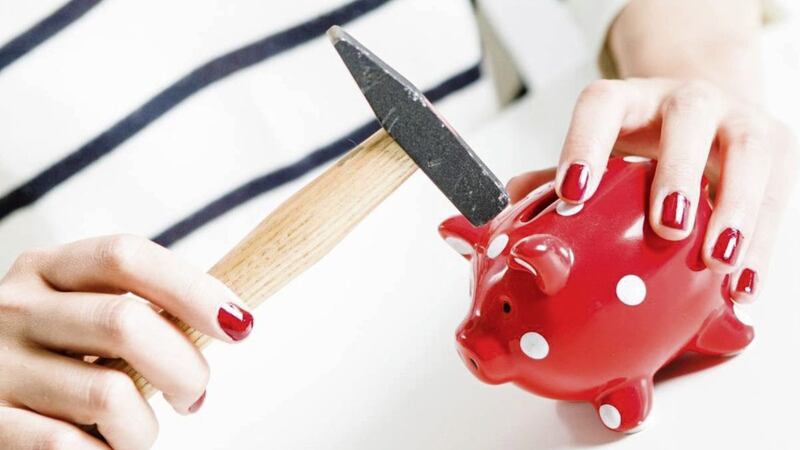IN the supermarket business there’s a term used to describe a special offer: a ‘wigig’. It could also be used to describe our tax and savings allowance coming up to April 5: ‘when it’s gone, it’s gone’.
Well, it’s that time of year again. Let’s this week focus on the humble Individual Savings Account or Isa, and look at how it can save tax for savers in the short and longer term.
The Isa was introduced in April 1999, and this year we can save up to £20,000 into any Isas we have.
Those of us who are older than we’d like to be may remember the earlier personal equity plans – PEPs - and the old Tax-Exempt Special Savings Accounts (TESSAs).
Well, the TESSAs were very similar to today’s cash ISA, and the PEPs were very similar to today’s stocks and shares ISA. We’ll explain what each of those is in a minute.
The popular way to describe an Isa is a ‘wrapper’ that protects your money from the bony fingers of the taxman, as your money grows. An Isa is a tax wrapper you can put around all sorts of things, from cash savings to shares, bonds and funds.
You can get six different kinds of Isa.
:: The cash Isa is a cash savings account inside this magic tax wrapper, you can have one from age 16.
:: The stocks and shares Isa is where you can hold investments in funds and shares. It protects you from income tax or capital gains tax on bond investments, or dividend tax or capital gains tax on stock market investments. What’s not to like!
The innovative finance Isa is a complex investment, very different from a savings account. It’s not for the faint-hearted: this is a high-risk Isa.
:: The junior Isa is for children aged 0-18 and anyone – you or relatives – can contribute. It’s a great way to give something on birthdays or Christmas that is put away for them until they reach 18, at which point the money becomes theirs. The ‘Jisa’ comes in cash and stocks and shares variants.
:: Lifetime Isas or ‘Lisas’ come as either cash Lisas or stocks and shares Lisas. If you’re aged 18-39 you can open a lifetime ISA and the government will top up all your contributions by 25 per cent. You can use it to buy your first home, or withdraw once you are 60. If you withdraw money for any other reason you can do so, but there’ll be a penalty to pay.
:: The help to buy Isa is closed to new entrants now. It was designed by government with the same 25 per cent top-up as the Lisa to help people save for a deposit on their first home. If you got in on time and do have a Help to Buy Isa, you can continue paying into it until December 2030.
Isas have been a runaway success: some £75bn was held in Isa accounts by 2020, with cash Isas much more popular than the stocks and shares version.
When should I choose the cash Isa and when the stocks and shares Isa?
If your savings goals are short-term (up to 5 years), for a house deposit or a new car, then cash is almost certainly the right choice for you. A cash Isa is also the ideal place to do what many financial advisers recommend: build up a nest egg worth three months’ wages. Not only will this repair that leaky roof or keep you in throat sweets if you get sick, it will also give you the luxury of being able to walk out of a job you have grown to hate, and you still have plenty of time to find a new one somewhere else. On the other hand, inflation hit 5.4 per cent this month, so keeping too much in cash for too long can be corrosive to your wealth.
I should also mention that, when the personal savings allowance arrived in 2016, people started to wonder whether a cash ISA was worth the bother. Basic rate taxpayers don’t pay tax on the first £1,000 of interest (£500 for higher rate taxpayers) and with many cash ISA rates so low, earning more than this is highly unlikely.
If you’re a basic rate taxpayer with a couple of thousand pounds in savings, you’re not going to save tax with a cash ISA this year – but you should also think ahead, as you could be saving significant tax in future years, as your savings build. At that time, you’ll also be glad you’ve got an Isa if a work promotion pushes you into the higher tax bracket and your savings allowance drops from £1,000 to £500 overnight.
The stocks and shares Isa is likely to serve you better than cash if your savings horizon is longer, say 10 years or more. Stock investments are historically proven to outperform cash, in the longer term.
These are just a few basic points about Isas, how they work, and whether they’re the right choice for you.
Is 2022 the time to think about opening one or more Isas, if you haven’t done so already – or if you have, to think of maxing out your savings allowance before April? Just remember: “When it’s gone – it’s gone.”
:: Michael Kennedy is an independent financial adviser and pensions specialist and can be contacted on 028 71886005. Further information on Facebook at Kennedy Independent Financial Advice or at www.mkennedyfinancial.com






